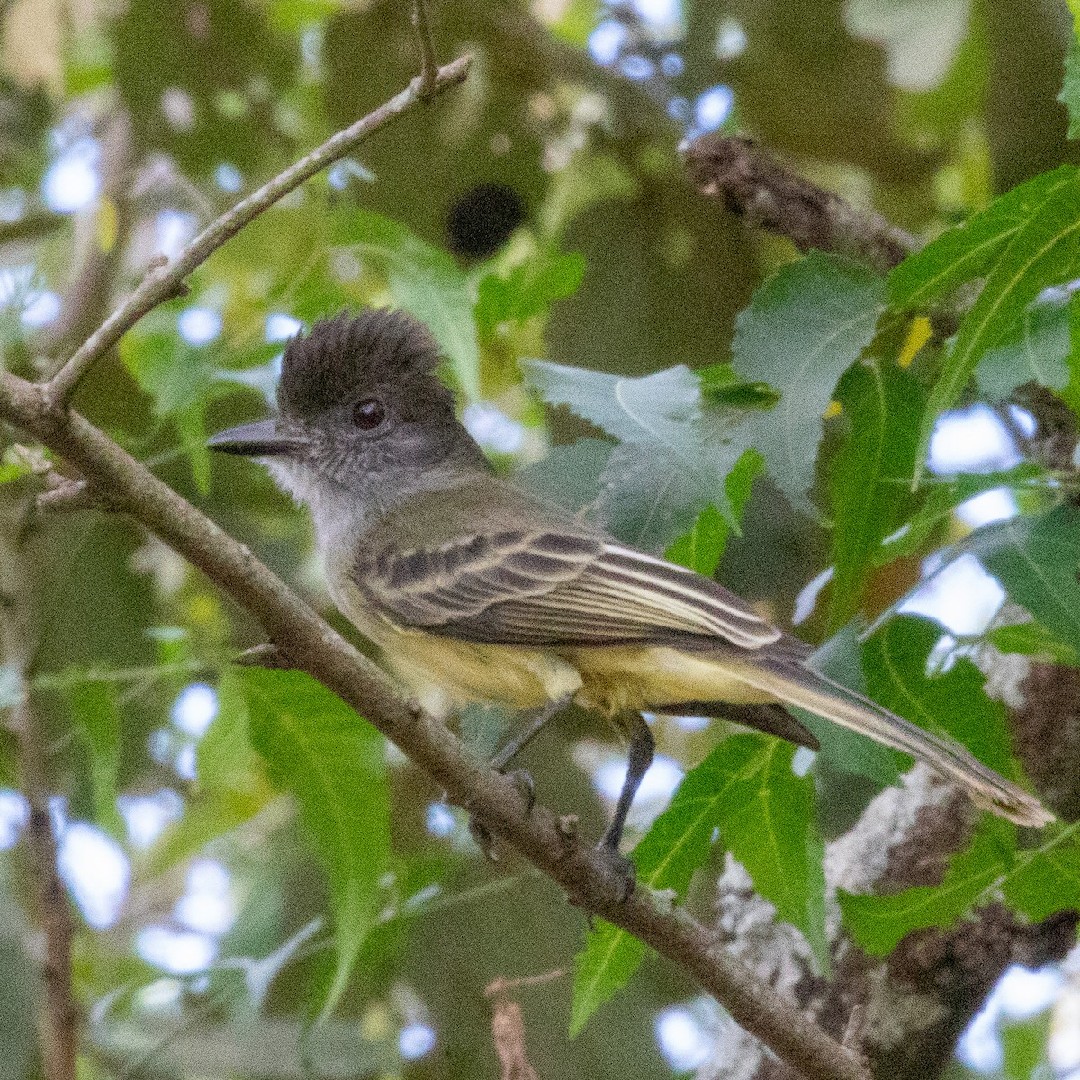Apical Flycatcher
A species of New World Crested Flycatchers Scientific name : Myiarchus apicalis Genus : New World Crested Flycatchers
Apical Flycatcher, A species of New World Crested Flycatchers
Botanical name: Myiarchus apicalis
Genus: New World Crested Flycatchers
Content
Description General Info
 Photo By Steve McInnis
Photo By Steve McInnis Description
The apical flycatcher is a typical representative of the Myiarchus flycatchers: a slim, medium-sized bird with few really distinctive features. The bird is 18-19cm in length, with greyish-olive upperparts. The wings are dusky, with whitish fringes to the tertials and coverts showing as two faint wing bars. The crown of the head is brownish-olive. The bird's throat and breast are pale grey. The underparts are mainly pale yellow. The tail is dusky with a greyish-olive underside. The tips of the tail feathers are white, which is diagnostic when compared to other Myiarchus flycatchers in its range. Males and females are identical in appearance. Juveniles have rufous fringes to their wing feathers. 
Size
17 cm
Nest Placement
Cavity
Feeding Habits
Apical Flycatcher predominantly eats insects and small fruits, often sallying from perches at middle and lower levels to forage either alone or in pairs. Beetles have been specifically noted in its diet.
Habitat
The apical Flycatcher predominantly resides in areas with scrubby vegetation, adapting to environments ranging from dry to arid valleys. It can also be found inhabiting forest fringes, lighter woodlands, and areas near watercourses with trees and brush. Additionally, apical Flycatcher has been observed in agricultural landscapes, including pastures and fields of crops such as rice and sorghum, often accompanied by scattered large trees and smaller shade trees.
Dite type
Insectivorous
General Info
Feeding Habits
Bird food type
Distribution Area
The apical flycatcher is found in the tropical and temperate zones of Colombia at lower altitudes - from 400m and upwards. Authorities differ on the upper limit of their range, providing numbers between 1700-2500m. The species is locally frequent in dry forest, arid and semi-arid open areas, savannas, and fields with scattered trees or light woodland, in the upper basins of the Magdalena River, the Cauca River and the Patiá and Dagua Rivers. 

 Photo By Steve McInnis
Photo By Steve McInnis Scientific Classification
Phylum
Chordates Class
Birds Order
Perching birds Family
Tyrant flycatchers Species
Apical Flycatcher